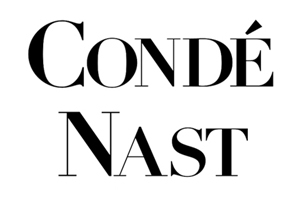Study: Conde Nast Has More Influence on Consumers Than Google or Facebook
Study: Conde Nast Has More Influence on Consumers Than Google or Facebook
Conde Nast has fast become a frontrunner in discovering ways to leverage its audiences across its 22 brands. Through a highly technical understanding of who its customers are and what they want, the company has developed a deep pool of user data. That allows it to create deeper revenue streams for advertisers.

(June 19, 2018), Conde Nast released the findings of a study conducted in partnership with Tapestry that identified the significance of brand recognition and trust as consumers make purchasing decisions.
Conde Nast and Tapestry conducted the study in spring 2018, using Tapestry’s CDJ technique. More than 4,500 U.S. consumers between the ages of 18 to 64 were sampled.
Key findings spoke to both consumer decision behavior and the level of trust placed in Conde Nast brands by those consumers.
According to the results, consumers spend a bulk of their time in the influence or pre-search phase. Essentially, customers know what they want before they seek it out, creating an opportune situation for trusted brands with loyal followers.
Product categories measured by the survey included beauty, fashion and tech, and the results were the same for each.
Those purchasing across beauty spent 80% of their time in the pre-search phase, gathering information across content platforms, including digital/video, social and print.
Fashion consumers were most motivated by ads and spent 69% of their time in the pre-search phase. Tech consumers were also motivated by ads and spent 65% of their time in the pre-search phase.
More generally, the study sought to discover how consumers are approaching their purchasing decisions.
The findings: 79% of consumers have a short list of brands they trust in mind before seeking a product, and 52% spend their time deciding between only two brands. Some 69% of consumers pay the most attention to ads from trusted sources familiar to them.
Pamela Drucker Mann, Chief Revenue and Marketing Officer of Condé Nast, stated: “Leveraging the influence of brands that consumers trust when they’re thinking about what to buy can have a tremendous impact on an advertiser’s bottom line. This study reveals that our brands have measurable influence on how consumers spend their money and time.”
In fact, Conde Nast brands have three times more influence over a consumer’s buying decisions than Google or Facebook.
Seventy-five percent of respondents trust the products Conde Nast brands recommend to them. Those numbers are even higher on a micro level: 92% of respondents trust Glamour, GQ and Vogue’s fashion recommendations and 90% trust Glamour and Allure in the area of cosmetics.
At the moment of purchase, Conde Nast is 26% more likely to drive purchase intent than Google and Facebook.
Again, the numbers are even higher when individual brands are considered: Wired is 63% more likely than Facebook to drive tech purchases and Allure at 67% more likely than Google to drive a purchase. GQ, Vogue and Vanity Fair index at 132 compared to Facebook regarding the purchase of fashion items.
Last week, at the Publishing Insider Summit, Conde Nast’s Chief Data Officer Karthic Bala discussed the strategies and tools that Conde Nast has developed the gain the most traction from visitors to its sites. That box of tools culminates in the company’s proprietary data tool Spire.
A Conde Nast spokesperson told Publishing Insider:: ldquo;What the study shows is that not all content has the same level of impact on consumers and that an optimal time to influence their purchase decisions is during the inspiration and discovery phase prior to search.”
For advertisers, the results of the study show they are “leaving a lot of pre-search opportunity on the table. Spire can enhance this effect by targeting specific audience demos across our portfolio, driving both effectiveness and efficiency.”
(39)

